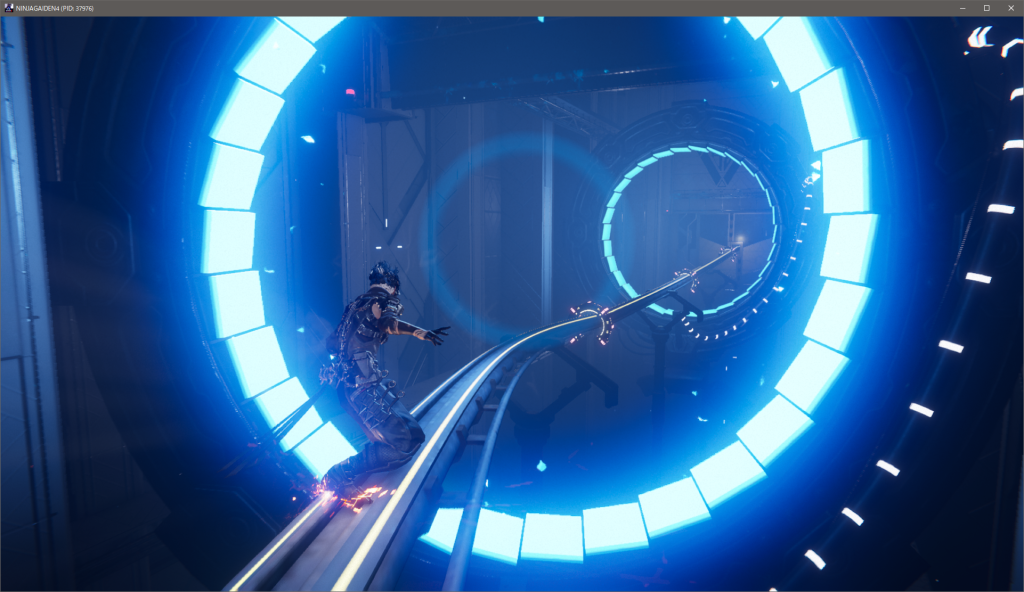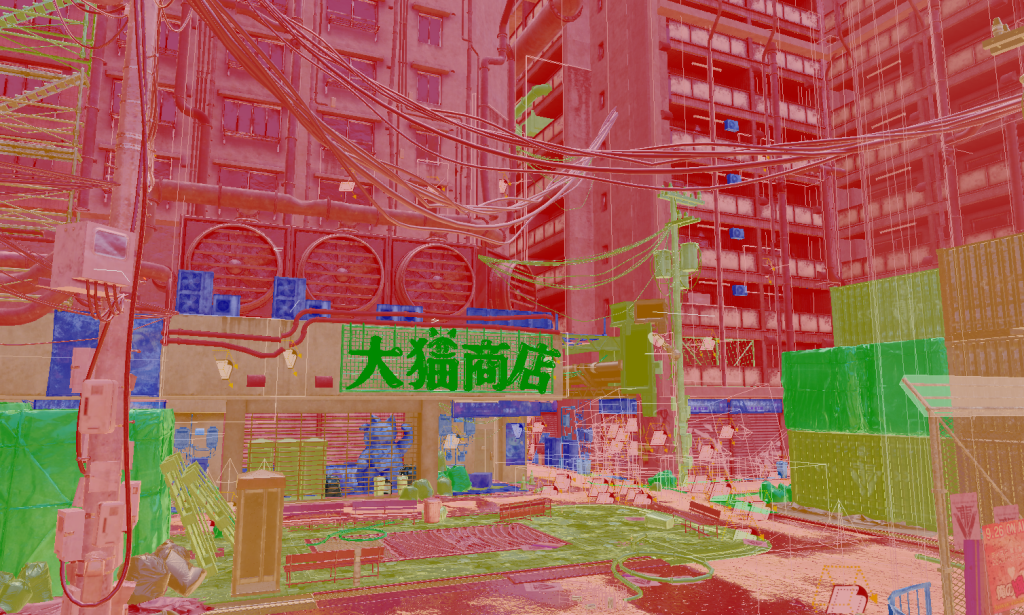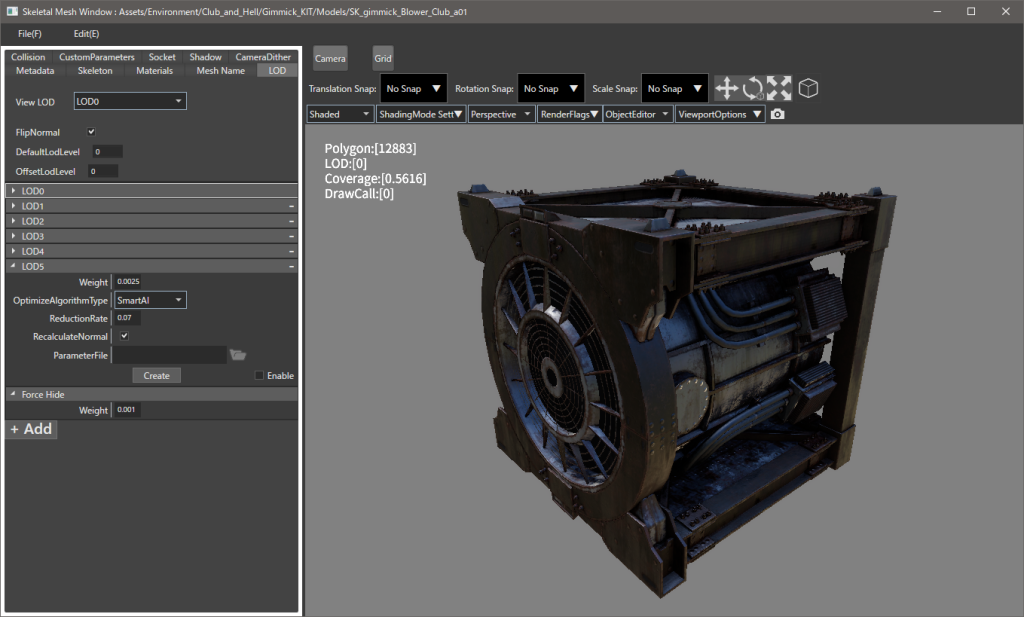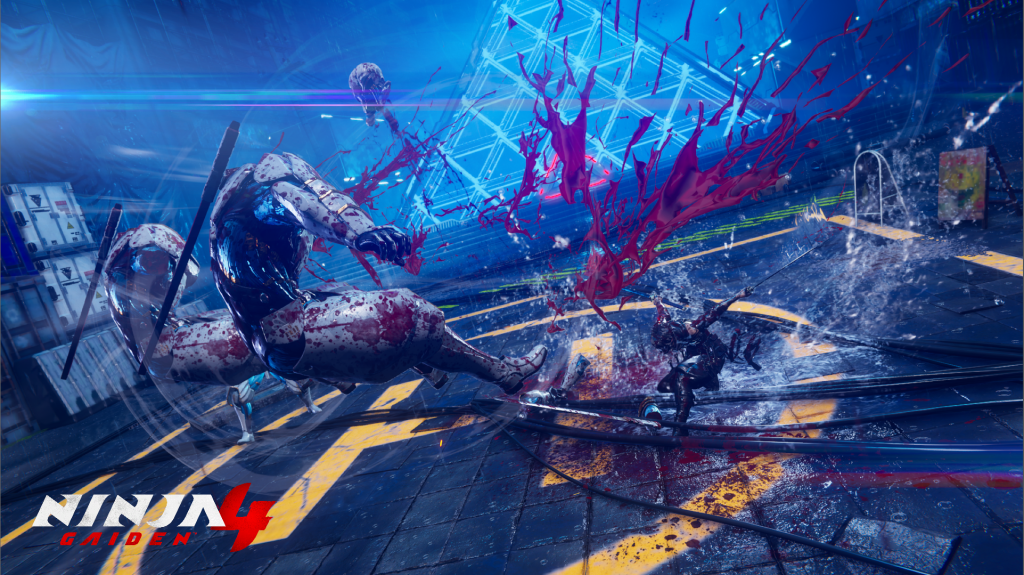Hi! My name is Murakami, and I’m one of the Project Managers for NINJA GAIDEN 4.
This article introduces some of the comprehensive optimization we implemented to achieve the high-speed action that defines this game.
Please note that this title uses PlatinumGames’ proprietary engine. I hope to share a glimpse behind the scenes of the graphics and “feel” of the gameplay that we achieved together with the in-house engine team!
 Image: Gameplay on our proprietary engine
Image: Gameplay on our proprietary engine
The 120 FPS Challenge: Pursuing Frame Rate and Smooth Gameplay
To maximize the action experience inherent to the NINJA GAIDEN series, we aimed for an exceptionally high frame rate of 120 FPS, going beyond the conventional 60 FPS. This translates to a demanding processing time of just 8 milliseconds per frame.
| FPS | Displayed Video Frames | Time to Display 1 Frame |
| 30FPS | 30 frames | 33 milliseconds |
| 60FPS | 60 frames | 16 milliseconds |
| 120FPS | 120 frames | 8 milliseconds |
8 milliseconds… meaning we need to complete various processes in a mere 0.008 seconds!
Even on current-generation platforms like the PlayStation 5 and Xbox Series X|S, maintaining this level required extraordinary effort. We had to reduce the overall processing load while retaining a certain level of graphics quality to achieve the target frame rate.
Thorough Optimization Through the Dual Engines of CPU and GPU
This title primarily uses three performance modes as its baseline:
- 120 FPS Mode
- Frame Rate Priority Mode
- Graphics Priority Mode
While 120 FPS Mode prioritizes performance above all else, careful design ensures that graphic quality doesn’t take too big of a hit. This title features various performance-intensive scenarios, such as scenes with numerous enemies or high-speed stage traversal sections on rails. To maintain graphical fidelity, we implemented thorough optimization across both the CPU and GPU, rather than relying solely on the GPU.
 Image: The high-speed movement scenes on the rails were an especially major headache for the optimization team!
Image: The high-speed movement scenes on the rails were an especially major headache for the optimization team!
Key Mesh Optimization Techniques: LOD, HLOD, Merged Mesh
To achieve our performance goals, we implemented various approaches, with one key point being optimization of the meshes used for characters and backgrounds.
This title utilizes the following techniques to reduce rendering load:
- LOD: Reduces the number of polygons in meshes based on distance
- HLOD: Merges multiple objects and simplifies rendering by grouping meshes for distant views
- Merged Mesh: Reduces mesh rendering commands when objects are densely clustered at close range
Since these techniques require pre-generation for the vast number of meshes appearing in the game, it was crucial to implement an automation system within the game engine.
 Image: Visualization of LOD stages for polygon reduction, color-coded
Image: Visualization of LOD stages for polygon reduction, color-coded
Automation Through Integration of InstaLOD and the In-House Engine
This game employs a powerful tool known as “InstaLOD” as the core of its optimization approach. We developed a system enabling direct control of InstaLOD through our proprietary engine. InstaLOD excels not only at reducing polygons but also at preserving crucial 3D model data like UVs and normal maps, enabling lightweight optimization while maintaining visual quality. On the flip side, the parameter settings are so wide-ranging and flexible that it was almost impossible for us to find the perfect balance!
 Image: Multiple LODs configured based on distance on our proprietary engine
Image: Multiple LODs configured based on distance on our proprietary engine
Dedicated Machine Operation for HLOD Bake
For HLODs that require extremely long generation times, we also automated the process by preparing dedicated high-performance machines for generation. For reference, here is an example of one machine we used for HLOD generation.
| CPU | Intel Xeon w9-3475X 36 core, 72 threads |
| Memory | DDR5 256GB |
| GPU | Geforce RTX4060Ti |
| Storage | NVMe M.2SSD |
*CPU cores and memory are crucial for HLOD generation!! (GPU requirements are relatively low)
Experience the High-speed Action for Yourself!

During development for this game, we established a path to achieve both high frame rates and high visual quality by positioning InstaLOD as the core tool for mesh optimization.
Playing at 120 FPS requires compatible hardware, but if you have the right setup, be sure to experience the satisfying smoothness it offers to the gameplay of NINJA GAIDEN 4!
Of course, you can still enjoy thrilling visuals and action in the other performance modes as well. Feel free to adjust the settings so they best suit your own gameplay environment.
Only a few days left until launch!! Prepare yourself for intense high-speed action that keeps the tradition of this legendary series alive!
 |
Manabu Murakami Transitioned from the software industry to the gaming industry in 2009, and joined PlatinumGames as a Project Manager in 2023. He has held a wide range of roles including system engineer, motion artist, lead artist, and TA team leader. Leveraging this experience, he is currently lead project manager for our latest title, “NINJA GAIDEN 4.” |
.png)




